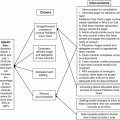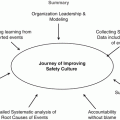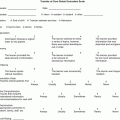Research investigation
Quality improvement
Purpose
To develop or contribute to generalizable knowledge
Designed to implement knowledge, assess a process or program as judged by established/accepted standards
Motivation for the project
Independent of routine care. To answer a question or hypothesis. Project occurs in part as a result to further an individuals’ professional goal
Result of knowledge is integral to ongoing management of local health-care system. May not be initiated by people involved in the project. May not benefit the evaluator professionally
Project design
Rigid protocol that is unchanged through a period of time. May involve a randomization
Activity is not mandated by institution or program
Adaptive, design changes in response to data gathered, no fixed time period. Generally does not involve a randomization to different processes
Activity mandated by the institution or clinic as part of its operations
Benefits
May not benefit current subjects, intended to benefit future patients
System or program may see direct benefit; patients may or may not benefit
Risks
May put subjects at risk
Should not increase risk to patients, with exception of potential breech of confidential patient information
Participant obligation
No obligation to participate
Responsibility to participate as a part of their care
Endpoint
To answer a research question
Improve current program, process, or system
Analysis
Statistically to prove/disprove hypothesis
To compare local program, process, or system to established standards
Adoption of results
Low priority to disseminate results quickly
Adopt results rapidly into local care system
Publication/presentation
Investigator obliged to share results
QI group encouraged to share systematic reporting of insights
When Is IRB Review Needed of QI Work?
As both QI projects and research can involve human subjects, it can be difficult to determine if QI projects require IRB review. Since research can be independent of clinical work and routine operations of the institution, research is usually outside the institution’s supervisory and management structure and thus requires IRB review to ensure the safety of human subjects. QI projects are directly linked to the clinical operations of the institution and thus are under the surveillance of the institution’s safety and quality supervision. Furthermore, the improvement cycles involved in QI projects make it difficult for IRB review as the time frame for review may hamper the ability of QI projects to benefit the patients being treated within the institution.
IRB review should be considered when there is uncertainty by the team, when the QI activity poses increased risk to the patient, or may consume substantial resources. External funding usually requires IRB involvement to ensure that the parties are complying with DHHS for human subject research. As QI activity continues to grow at local institutions, many local IRBs have developed worksheets to help local investigators determine if the IRB needs to review the QI project. Review of information from institutions’ IRBs shows there are common considerations as to what requires IRB review [17–19]. Some of the factors which appear to universally indicate the need for IRB review include testing of new treatments, inclusion of randomization, involvement of personnel who have no direct interest in improving the institution’s quality of care, delay in reporting data for feedback, and outside funding from organizations with an interest in the use of the results. The Office of Human Research Protections has provided guidance on when QI activities may infringe upon research on human subjects [20]. Publication of QI activities can also be viewed differently by local IRBs based as the dissemination of the results from the QI work may be considered contributing to general knowledge, similar to research.
Considerations When Publishing QI Work
Although QI projects focus on making improvements at local sites rather than on generating new scientific knowledge, publishing the work has several benefits. Publishing a QI activity makes one ensure the reason for the activity along with verifying the observations seen at the institution. It can help other facilities determine if their system can benefit from these improvements. Improvements seen in multi-institution collaborative QI work may prevent outside systems from wasting resources on verifying the results. Many health-care journals now include areas for publication of QI projects. However, due to the nature of improvement cycles in QI work, it can be difficult to know how to publish QI work in a meaningful way to disseminate the methods in how the results were achieved. In 2008, the Standards for Quality Improvement Reporting Excellence (SQUIRE 1.0) guidelines were developed to help with improving completeness, precision, and transparency of published QI work so others might learn from it. As experience in QI work grew in health care, the SQUIRE guidelines were updated and published in 2015 [21, 22]. Although broken down into topics similar to a research article, it gives suggestions as to how to prepare the manuscript to ensure that QI work is described in a consistent manner. Increasingly, manuscripts detailing the results of QI work are being published in traditional medical journals.
Using Quality Improvement to Advance a Career
Quality Improvement efforts have involved every category of personnel in medicine, but perhaps the most challenging group to engage is the physician group. From resident trainees to attending physicians, there is reluctance to participate in QI and safety efforts [23]. Many reasons are given, from lack of reimbursement for this time to lack of training to punitive measures [24, 25]. However, it is well documented that QI and safety efforts are more successful with physician engagement and support. Involvement of physicians may signify to all those involved that this effort is important and gain credibility with patients and families [26]. Some institutions are moving toward a physician quality officer of chief safety officer to help spearhead QI and safety efforts and communicate with peers on their importance [27].
Pediatric hematology and oncology lends itself to ongoing practice improvement. Safety mechanisms are inherent in chemotherapy administration guidelines and incorporate safety efforts for patients and staff. Due to more medically complex pediatric patients requiring central venous access, efforts to reduce venous thromboembolism with mechanical or pharmacological means have been introduced [28]. In hemophilia, national registries exist to measure specific outcome measures including compliance with factor preparations. Palliative care is an area of pediatric hematology, oncology, and stem cell transplant that has filled a need for formal education with a train-the-trainer method of teaching and is performing periodic evaluations to examine its impact [29].
Within the field of pediatric hematology and oncology, there are numerous opportunities for physicians to become involved in QI and safety [30]. Most hospitals have organized efforts to improve chemotherapy safety with involvement of information technology and pharmacy staff. In the 15 years since publication of To Err is Human, there has been tremendous emphasis on health-care-associated conditions, and collaborative efforts have formed to address many of them including catheter-related central line bloodstream infections (CLABSI), other hospital-acquired infections, deep vein thromboses, and readmissions [31–34].
Quality improvement work has been ongoing for decades, and those who have participated in this work extensively have unique and valuable perspectives for those considering such a career path. In a brief, anonymous survey of general academic pediatricians and pediatric academic subspecialists recognized as QI experts by their peers (unpublished data), the respondents shared that they reached this career path in various ways over varying amounts of time. Of the 12 respondents, five had participated in QI work for over a decade, while three had been involved in QI efforts between 6 and 10 years. The remaining quarter had been involved in QI work for less than 6 years. Time spent in QI efforts ranged from greater than 75% of their professional time in about one fourth of those surveyed to between 10 and 25 % of time for half of the respondents.
Eight of 12 reported that they had intentionally focused on QI work, while the remaining quarter were split between continuation of work started in residency or fellowship and the evolution of a small QI project into larger efforts. Nearly all respondents indicated that they feel QI and safety efforts within pediatrics, and pediatric subspecialties will increase in the coming years and will have a positive impact on the field. The pediatric subspecialties represented included allergy/immunology, infectious disease, and critical care. All surveyed indicated that they either have further certification or degrees that pertain to QI and safety efforts, ranging from Lean Six Sigma Green Belt certification, Institute for Healthcare Improvement (IHI) certification, High Reliability Trainer, Baldrige Examiner, Masters in Medical Management, Advanced Training Program (ATP) Intermountain program, Masters in Business Organizational Excellence, and Masters of Science in Clinical Information.
Leaders in QI and safety efforts within pediatrics indicated the QI work being done should be valued by insurance companies/payers, leadership, and fellow physicians. Such work should be taken into account when deciding academic promotion. One respondent encouraged physicians in our subspecialty to “be open to change and remember that all healthcare workers are striving to make things better for patients.” Another expert encouraged those within hematology/oncology to embrace quality and safety work and to seek leaders outside of hematology/oncology to guide publishing of QI work as the process differs from the publication of research results. Another wise respondent recommended that “[quality and safety] has to become part of who we are and not an additional thing to do—when improving care is as natural as examining a patient we will have achieved a lot!” These lessons indicate that while improvements have been made regarding acceptance of QI and safety work as integral to the success of medicine, there is still more work to be done.
Stay updated, free articles. Join our Telegram channel

Full access? Get Clinical Tree








